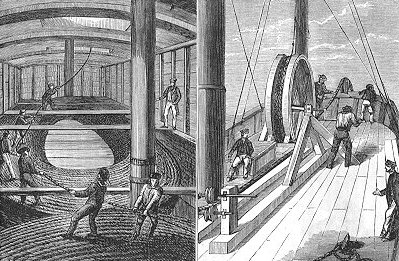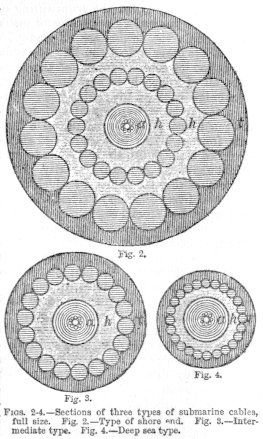A TransAtlantic Cable
Today, Queen Victoria sends a telegram to President Buchanan. The University of Houston's College of Engineering presents this series about the machines that make our civilization run, and the people whose ingenuity created them.
After Samuel F.B. Morse showed that long-distance telegraphy was workable, we quickly wove a spider web of wires over America. One of the first was Morse's cable under New York Harbor. Taking telegraphy into the inky ocean depths opened a mare's nest of problems. Still, a cable was in use under the English Channel by 1851. That was only 14 years after Morse demonstrated his first telegraph. By 1853, England was linked to Ireland.
A year later, an English engineer named Gisborne went to the young American financier Cyrus Field with plans to lay a cable from America to Newfoundland. Field went home to think that one over. He came back having decided to go for broke. He set up a company to lay telegraph cable all the way to England. The segment to Newfoundland was finished in two years. The waters were fairly shallow with a silt bottom that protected the cable.
But the 2200-mile stretch under the Atlantic posed terrible difficulties. The first cables were stranded copper, insulated with gutta percha and tarred hemp. They were wound with 300,000 miles of iron wire to protect them. They were about half an inch in diameter. No ship was big enough to carry thousands of miles of cable, so it had to be spliced in mid-ocean. The cables broke twice and were lost. A third try succeeded in 1858.
All the while, scientists and engineers argued about how much voltage it would take to carry a signal over the terrible distance. The high-voltage people won out with a 2000-volt system. After a month of operation, it burned through the insulation off the coast of Ireland. But while it lasted, the public greeted the failing cable with euphoria. A 98-word message from Queen Victoria to President Buchanan took seventeen hours to send. New Yorkers celebrated the linkup with fireworks in the street.
But the cable's failure was followed by the Civil War. That ended any hope of reviving the project until 1865. Then, in 1865, another failure came to the rescue. The Great Eastern, the largest ship ever built, had failed as a passenger ship because it burned too much fuel. Still, it was the only ship on the ocean big enough to carry a single strand of one-inch reinforced cable 2700 miles long. It could carry a single strand that weighed 5000 tons.
That cable broke in 1865, but the Great Eastern succeeded a year later. The public, once bitten and twice shy, was not so excited this time. But this stronger cable, operating under low voltage, survived to change the very character of the relationship between America and Europe. It changed much more. It changed the character of life on Planet Earth. Some years later, author William Saroyan wrote in his book, The Human Comedy, "How much does is cost to send a telegraph to New Jersey?" The wonderfully apt answer, of course, was, "Not nearly as much as it's worth."
I'm John Lienhard, at the University of Houston, where we're interested in the way inventive minds work.
(Theme music)
Chiles, J. R., A Cable Under the Sea. American Heritage of Invention & Technology, Fall 1987, pp. 34-41.
This is a greatly revised version of Episode 59.

Laying a short length of cable in Dover Channel (from Harper's Monthly, 1873)

From the 1897 Encyclopaedia Britannica